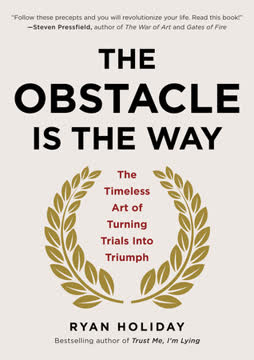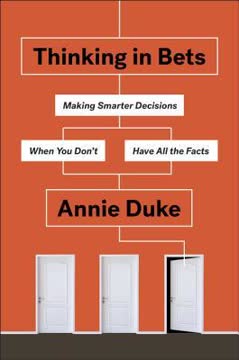重点摘要
1. 确定你的目标和优先事项以实现伟大
“通过确定你的目标和优先事项,你开始实现你想要的成功。”
目标驱动成功。 明确你生活的目标和首要优先事项是实现伟大的基础。这个过程需要自我反思和诚实的自我评估,以识别对你真正重要的事物。
- 确定目标和优先事项的步骤:
- 问自己:“我生活的目标是什么?”
- 确定你最重要的三个优先事项
- 将它们写下来并定期回顾
通过清晰地表达你的目标和优先事项,你创建了一个个人的“生活记分板”,帮助你衡量进展并专注于真正重要的事情。这种清晰感如同指路明灯,帮助你做出决策并有效分配时间和精力。
2. 设想理想的自我以塑造现实
“你会像你设想的那种人一样行动。”
自我形象驱动行为。 创建一个生动、详细的理想自我愿景可以显著影响你的行动和结果。这种“自我形象的愿景”是个人转变的强大工具。
- 有效自我形象愿景的组成部分:
- 未来自我的详细心理意象
- 包含所有感官(视觉、听觉、感觉)
- 与你的目标和优先事项一致
- 每天回顾30秒
定期设想理想的自我有助于将你的潜意识与目标对齐。这种练习增加了动力,提升了自信,使你更有可能采取与期望未来一致的行动。通过不断让你的思维接触这种积极的自我形象,你逐渐重塑了对自己能力的信念。
3. 设定产品目标,强调过程目标
“要在生活中实现伟大,你需要重视实现目标所需的过程。”
目标引导行动。 设定明确的产品目标(最终结果)并强调过程目标(每日行动)为成功创造了一条路线图。这种双重方法确保你既有明确的目的地,又有实际的计划来到达那里。
-
产品目标:12个月内的具体、可衡量的结果
-
过程目标:通向产品目标的日常或定期行动
-
示例:
- 产品目标:在12个月内销售额增加20%
- 过程目标:
- 每天拨打20个客户电话
- 每天进行3次面对面会议
- 每天花90分钟进行准备/组织
通过关注过程目标,你将注意力从可能令人不知所措的最终结果转移到可管理的日常行动上。这种方法减少了压力,增加了一致性,最终使你更容易实现产品目标。
4. 通过日常习惯优先考虑你的优先事项
“如果你想实现产品目标并生活在自我形象的愿景中,过程目标的完成必须是每天的优先事项。”
习惯驱动成功。 一致地优先考虑你最重要的任务(过程目标)对于实现更大的目标至关重要。这需要纪律和拒绝不重要活动的能力。
- 优先考虑优先事项的策略:
- 在日历中安排过程目标
- 早上完成重要任务
- 在优先时间内减少干扰
- 学会对非必要请求说“不”
创建一个与优先事项一致的“完美日程”可以帮助你专注于真正重要的事情。这可能涉及调整工作时间、委派任务或消除浪费时间的活动。记住,你的一致行动决定了你的结果,因此将优先事项作为你日常生活中不可妥协的一部分。
5. 每天评估你的表现以实现持续改进
“每天花时间评估你的个人进展和努力,你将不可避免地学会实现你的胜利。”
自我评估驱动成长。 实施每日表现评估例行程序有助于你保持责任感,识别改进领域,并庆祝成功。这种做法使你专注于目标,加速你的进步。
- 有效每日评估的组成部分:
- 确定三件做得好的事情
- 确定一个需要改进的领域
- 计划一个行动以实现改进
- 对过程目标的进展进行评分(1-10分)
使用“成功日志”记录这些评估,创建一个你成长的有形记录。这种做法将你的心态从完美主义转向持续改进,提升自信和动力。通过持续评估你的表现,你培养了一种自我反思的习惯,这对长期成功至关重要。
6. 控制你的激发状态以实现最佳表现
“学会控制你的激发状态,使你的自信心增强,大脑更有效地运作,成功不断增长。”
情绪控制提升表现。 理解和管理你的理想激发状态(IAS)对于持续高水平表现至关重要。你的IAS是特定任务的最佳身体和心理激活水平。
- 控制激发状态的步骤:
- 确定关键任务的IAS(1-10分)
- 进行身体健康的练习(睡眠、营养、锻炼)
- 在智力上做好准备(行业知识、客户洞察)
- 使用集中呼吸调整激发水平
通过学习识别和调整你的激发状态,你可以更一致地进入表现区。这项技能使你能够保持专注,做出更好的决策,并在压力下更有效地执行任务。
7. 在关键情境中编写成功剧本
“通过了解和练习你要说的话来提升你的专注力——在你说之前!”
准备提升沟通。 为你最重要的商业互动开发和练习剧本显著提高了你的表现和自信。这种技巧使你能够在高压情况下清晰有效地传达信息。
- 创建有效剧本的步骤:
- 确定你最重要的3个沟通情境
- 为每个情境写出关键点和短语
- 练习表达,直到感觉自然
- 根据实际经验进行调整
编写剧本并不意味着听起来像机器人;相反,它确保你涵盖所有关键点,同时允许灵活应对特定情况。通过准确知道在关键时刻想要说什么,你可以腾出心理空间专注于互动的其他方面,例如观察气氛或回答问题。
8. 每天进行心理锻炼以增强专注力
“每天完成100秒的心理锻炼,以显著提高你的专注力和执行能力。”
心理准备驱动表现。 每天进行100秒的心理锻炼可以显著增强你的专注力、自信心和执行力。这种练习使你的思维与目标对齐,为最佳表现做好准备。
- 5步心理锻炼:
- 集中呼吸(15秒)
- 身份声明(5秒)
- 愿景和诚信亮点回顾(60秒)
- 重复身份声明(5秒)
- 集中呼吸(15秒)
通过持续进行这种心理锻炼,你训练你的思维专注于目标和实现目标所需的行动。这种练习强化了你的自我形象,提升了自信,并在心理上为即将面临的挑战做好准备。随着时间的推移,这100秒的投资在提高专注力和表现方面带来了显著回报。
9. 发展无情解决方案专注(RSF)以保持乐观
“在60秒内,将所有以问题为中心的思维转变为以解决方案为中心的思维,以显著改善你的健康、幸福和成功。”
解决方案专注孕育乐观。 发展无情解决方案专注(RSF)是保持乐观和克服障碍的关键。这种心理技能涉及迅速从以问题为中心的思维转向以解决方案为中心的思维。
- RSF技巧:
- 识别消极或以问题为中心的思维
- 在60秒内问:“我能做什么不同的事情来改善这种情况?”
- 确定一个“+1解决方案”(任何改进,无论多小)
- 重复直到找到可行的解决方案
通过持续练习RSF,你训练你的思维以积极、主动的心态应对挑战。这种习惯不仅提高了你的问题解决能力,还增强了你的整体幸福感和韧性。记住,目标是进步,而不是完美——即使是小的前进步伐也算是解决方案。
10. 采用盖布纪律:无论如何完成你开始的事情
“当你下定决心去做某事时,找到办法去完成它……无论如何!”
纪律确保执行。 采用“盖布纪律”,灵感来自摔跤传奇丹·盖布,意味着全心全意致力于你的目标,并坚持到底。这种坚定的奉献精神对于将意图转化为结果至关重要。
- 盖布纪律的核心组成部分:
- 优先考虑关键任务的纪律
- 每次都完成你开始的事情
- 如果未能达成,重新承诺并再试一次
培养盖布纪律需要实践和坚持。建立纪律的策略包括:
- 限制消耗意志力的诱惑
- 通过偶尔超越目标来“过度练习”纪律
- 使用心理教练来获得灵感和责任感
通过培养这种程度的纪律,你确保你的计划和目标不会停留在意图上。盖布纪律将你的承诺转化为一致的行动,最终实现你最重要的目标。
最后更新日期:
FAQ
What's "Executive Toughness" by Jason Selk about?
- Overview: "Executive Toughness" is a mental-training program designed to enhance leadership performance by developing mental toughness.
- Focus Areas: The book emphasizes accountability, focus, and optimism as the three key characteristics of mental toughness.
- Target Audience: It is aimed at business professionals, executives, and anyone aspiring to improve their leadership skills and personal success.
- Methodology: The book provides actionable steps and exercises to help readers define their goals, improve focus, and maintain a positive outlook.
Why should I read "Executive Toughness"?
- Improve Leadership Skills: The book offers practical tools to enhance your leadership performance by developing mental toughness.
- Actionable Advice: It provides a step-by-step guide to setting and achieving personal and professional goals.
- Proven Techniques: The methods are backed by the author's experience with top athletes and business leaders.
- Holistic Approach: It covers various aspects of personal development, including accountability, focus, and optimism.
What are the key takeaways of "Executive Toughness"?
- Define Your Win: Know your purpose and priorities to solidify your ability to win in important aspects of life.
- Set Product and Process Goals: Emphasize daily actions that lead to achieving larger goals.
- Develop Relentless Solution Focus: Replace problem-focused thoughts with solution-focused thinking to improve health, happiness, and success.
- Adopt Gable Discipline: When you set your mind to do something, find a way to get it done, no matter what.
What is the "Relentless Solution Focus" in "Executive Toughness"?
- Definition: RSF is the practice of replacing problem-focused thoughts with solution-focused thinking within 60 seconds.
- Optimism: It is a key component of mental toughness, promoting a hopeful and confident outlook on future outcomes.
- Practical Tool: The book suggests asking, "What is one thing I can do differently that could make this situation better?" to shift focus from problems to solutions.
- Benefits: RSF helps in overcoming obstacles, improving performance, and achieving personal and professional success.
How does "Executive Toughness" define accountability?
- Definition: Accountability is doing what needs to be done and taking responsibility for actions and outcomes.
- Importance: It is one of the three key characteristics of mental toughness, essential for personal and professional growth.
- Daily Practice: The book emphasizes the importance of daily performance evaluations to maintain accountability.
- No Excuses: It encourages a no-excuse mentality, focusing on finding solutions rather than justifying failures.
What is the "Vision of Self-Image" in "Executive Toughness"?
- Definition: It is a detailed mental video of who you want to be and how you want your life to turn out in five years.
- Purpose: The vision helps align your self-image with your goals, motivating you to achieve them.
- Daily Practice: The book recommends spending 30 seconds each day visualizing this vision to reinforce your self-image.
- Impact: A strong vision of self-image can significantly increase your likelihood of achieving personal and professional success.
What are "Product and Process Goals" in "Executive Toughness"?
- Product Goals: These are result-oriented goals that are potentially attainable within the next 12 months.
- Process Goals: These focus on daily actions required to achieve the product goals.
- Emphasis: The book stresses the importance of emphasizing process goals to ensure consistent progress toward larger objectives.
- Examples: It provides examples of both types of goals to help readers apply the concepts to their own lives.
How does "Executive Toughness" suggest controlling your arousal state?
- Definition: Arousal state refers to the extent to which nerves and emotions are engaged and on alert.
- Preparation: The book suggests identifying your ideal arousal state for important tasks and using physical and intellectual preparation to maintain it.
- Techniques: It includes methods like centering breaths and visualization to help control arousal levels.
- Benefits: Proper control of arousal state can enhance focus, improve performance, and reduce anxiety.
What role do scripts play in "Executive Toughness"?
- Purpose: Scripts help you know and practice what you are going to say before you say it, improving focus and confidence.
- Routine: The book emphasizes the importance of routine and practice in delivering consistent, high-quality performances.
- Application: It suggests identifying the top three most important scripts for your work and personal life.
- Practice: Regular practice of these scripts can lead to improved communication and better outcomes in various situations.
What are the best quotes from "Executive Toughness" and what do they mean?
- "You are going to survive. So why not win?" - This quote by Tom Bartow emphasizes the importance of not just surviving but thriving by aiming for success.
- "With practice, self-discipline becomes a habit." - Dan Gable's words highlight the power of consistent practice in developing discipline.
- "Whether or not you think you can, you're right." - A reminder from Henry Ford, included in the book, about the power of self-belief and mindset.
- "The greatest people in the world do two things well: They give themselves credit where credit is due, and they relentlessly pursue improvement." - A lesson from Coach John Wooden on the importance of self-recognition and continuous growth.
How does "Executive Toughness" address overcoming obstacles?
- Self-Imposed Barriers: The book identifies apathy, laziness, and fear as the main internal obstacles to success.
- Actionable Tips: It provides specific strategies to overcome these barriers, such as setting clear goals and visualizing success.
- Mindset Shift: Encourages a shift from problem-centric thought to relentless solution focus to tackle challenges effectively.
- Discipline: Emphasizes the role of discipline in consistently overcoming obstacles and achieving greatness.
What is the "Minimum Effective Dose" concept in "Executive Toughness"?
- Definition: It refers to the bare minimum amount of preparation needed to be successful.
- Application: The book suggests identifying the essential tasks that will lead to success and focusing on them.
- Efficiency: This concept helps in avoiding burnout by ensuring that effort is directed toward the most impactful activities.
- Balance: It encourages a balance between preparation and action, ensuring that you are ready without overextending yourself.
评论
《执行力的坚韧》获得了大多数积极的评价,读者们赞赏其在目标设定、心理韧性和绩效优化方面的实用建议。许多人发现书中的策略不仅适用于商业领域。评论者称赞作者对可操作步骤的关注以及练习的加入。然而,也有一些批评意见,包括内容重复和标题可能具有误导性。总体而言,读者认为这本书对提高专注力、纪律性以及实现个人和职业目标非常有帮助,尽管少数人觉得书中缺乏新颖的见解。
Similar Books
















